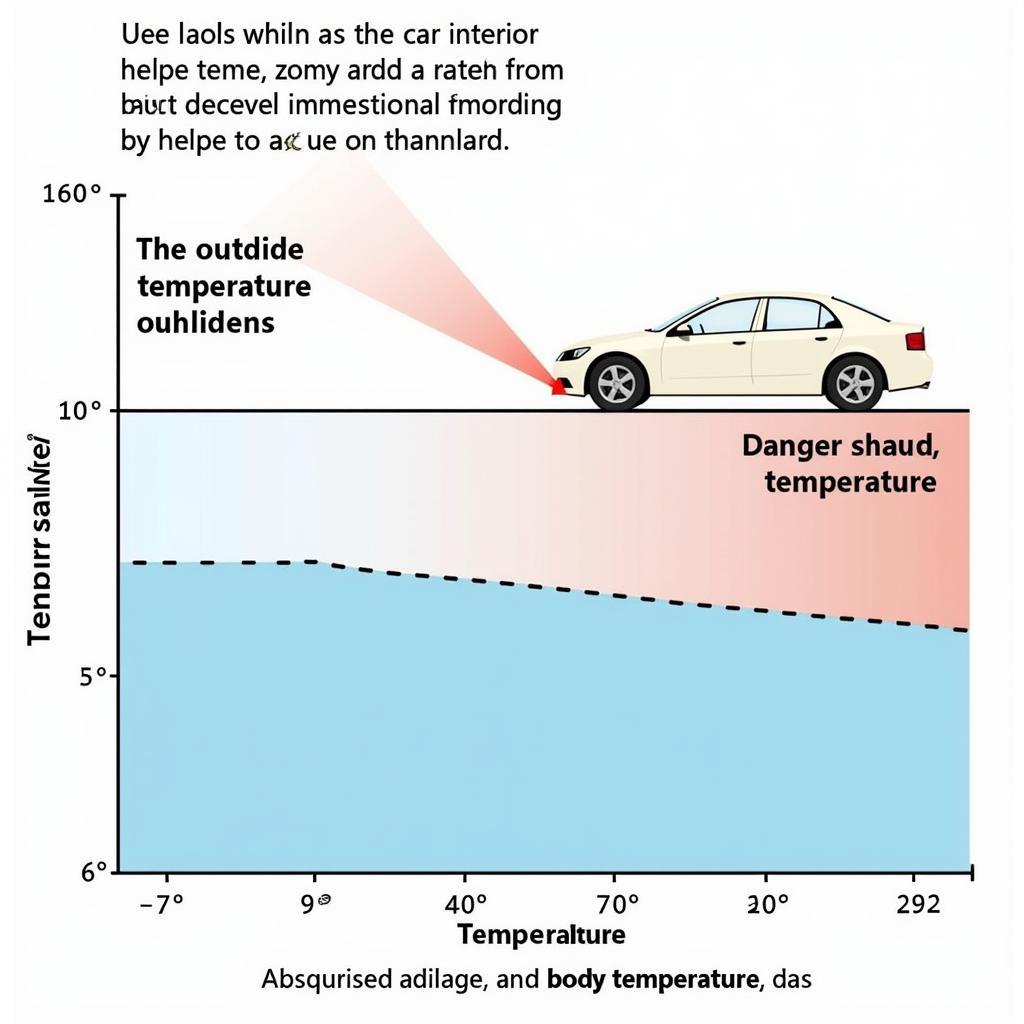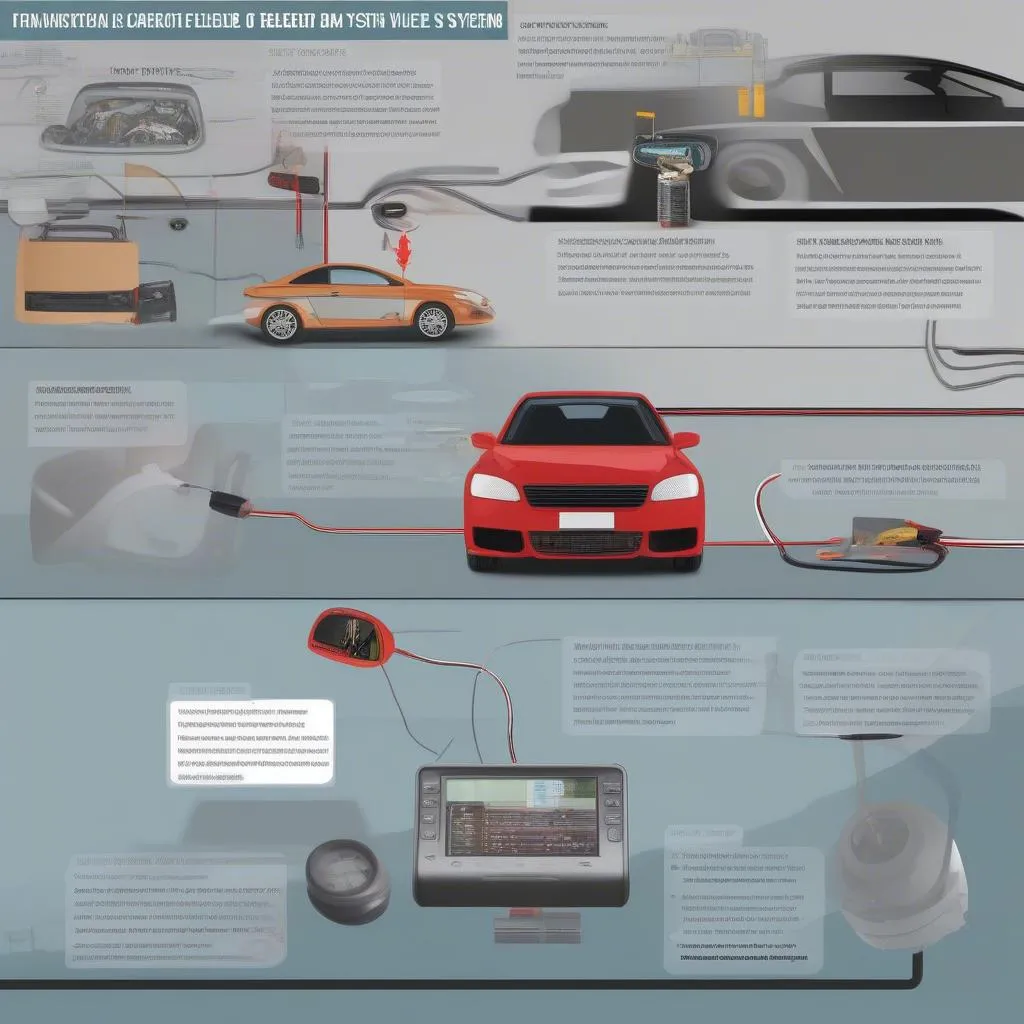The dreaded “warning alarm back seat child” can be a heart-stopping moment for any parent. This article dives deep into understanding this vital safety feature, troubleshooting common issues, and providing solutions to silence that alarming reminder while ensuring your child’s safety.
While initially designed to prevent tragic hot car deaths, these systems can sometimes trigger false alarms, causing frustration and confusion. Understanding how they work is the first step towards effectively managing them. Most systems utilize weight sensors in the rear seats, designed to detect the presence of a child. Others employ door sequencing logic, triggering an alarm if the rear doors were opened and closed before the driver’s door. More advanced systems even use ultrasonic sensors or cameras to detect movement and breathing patterns.
Understanding Your Vehicle’s Back Seat Child Alarm System
Different manufacturers use varying technologies. Knowing your specific system is crucial. Consult your owner’s manual for details. This will provide insights into the type of sensor used, how to disable the alarm properly, and any specific troubleshooting steps recommended by the manufacturer. Some systems automatically activate when a rear door is opened and closed before the engine is started. Others may have manual activation buttons.
Troubleshooting Common False Alarms
False alarms can be triggered by various factors. A common culprit is leaving heavy objects on the back seat. Even grocery bags or a laptop can sometimes trigger the weight sensor. Similarly, temperature fluctuations can sometimes affect the sensitivity of these sensors. Extreme heat or cold may lead to erroneous readings.
how to disable anti theft on 2002 ford explorer
Another potential issue relates to the sensitivity settings of the alarm. If the sensitivity is set too high, even minor vibrations or movements could trigger it. This can be particularly problematic in older vehicles. In such cases, adjusting the sensitivity or checking the sensor’s calibration might be necessary.
What To Do When the Alarm Goes Off
First and foremost, check the back seat thoroughly. Even if you’re certain there’s no child present, double-check to be safe. If there is indeed no child, the next step is to try resetting the system. This usually involves turning the car off, locking and unlocking the doors, and restarting the engine. Refer to your owner’s manual for the specific reset procedure for your vehicle.
“Always prioritize safety. Even if the alarm seems to be a false alarm, taking a few seconds to double-check can prevent a tragedy,” says David Miller, Senior Automotive Diagnostic Technician at Miller Automotive Solutions.
how much it cost to disable anti theft system
How to Prevent Future False Alarms
Preventing false alarms starts with understanding what triggers them. Avoid leaving heavy objects on the back seat. If you must transport heavy items, consider placing them in the trunk. Regularly check the sensor’s calibration and sensitivity settings. If you notice frequent false alarms, it’s best to consult a qualified technician.
Advanced Diagnostic and Software Solutions
In some cases, persistent issues might require advanced diagnostics and software solutions. Modern vehicles are equipped with sophisticated computer systems that control various functions, including the back seat child alarm. Remote diagnostic and programming services can often identify and rectify underlying software glitches that might be causing the false alarms.
“Remote diagnostics are transforming the automotive repair industry. We can often identify and resolve software-related issues without the customer even having to bring their car into the shop,” explains Sarah Johnson, Lead Software Engineer at Johnson Automotive Software Solutions.
how to reset anti-theft on a ford explorer 2002
If the problem persists despite trying the basic troubleshooting steps, it’s advisable to consult a qualified technician specializing in remote diagnostics and programming for your vehicle’s make and model. They can access the vehicle’s computer system remotely, diagnose the issue, and implement the necessary software updates or calibrations to resolve the problem effectively.
In conclusion, the “warning alarm back seat child” is a crucial safety feature, and understanding how it works is essential. By following the troubleshooting steps and preventative measures outlined in this article, you can effectively manage this system and ensure both your child’s safety and your peace of mind. If the problem persists, don’t hesitate to seek professional assistance from a qualified technician specializing in remote diagnostics and programming.


